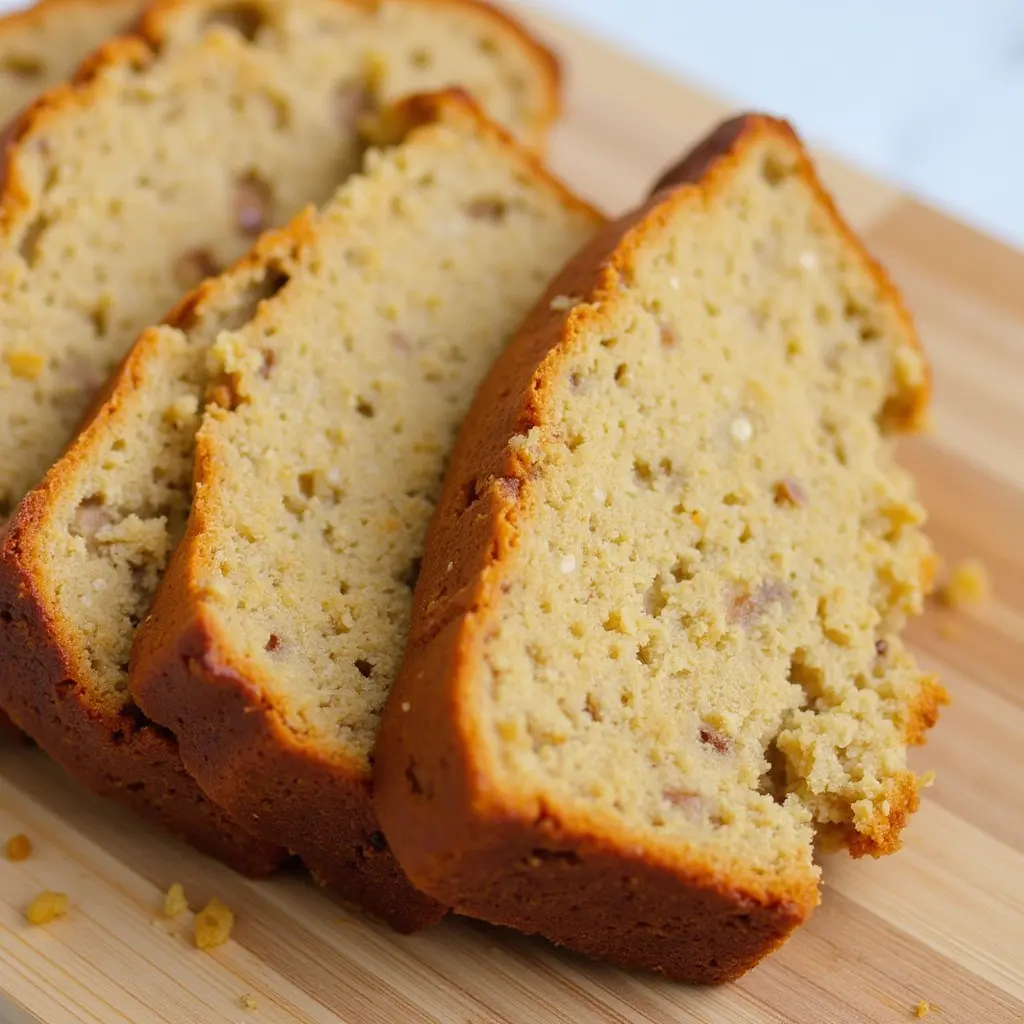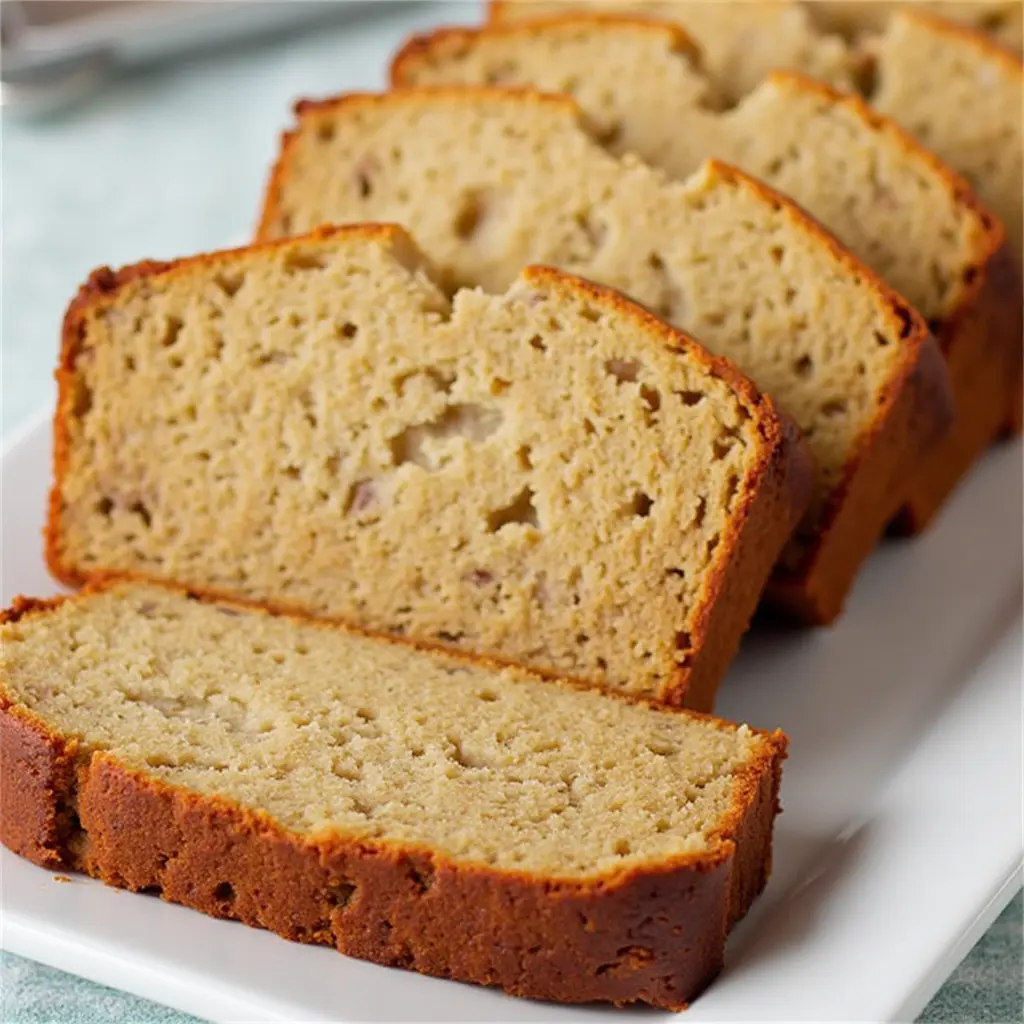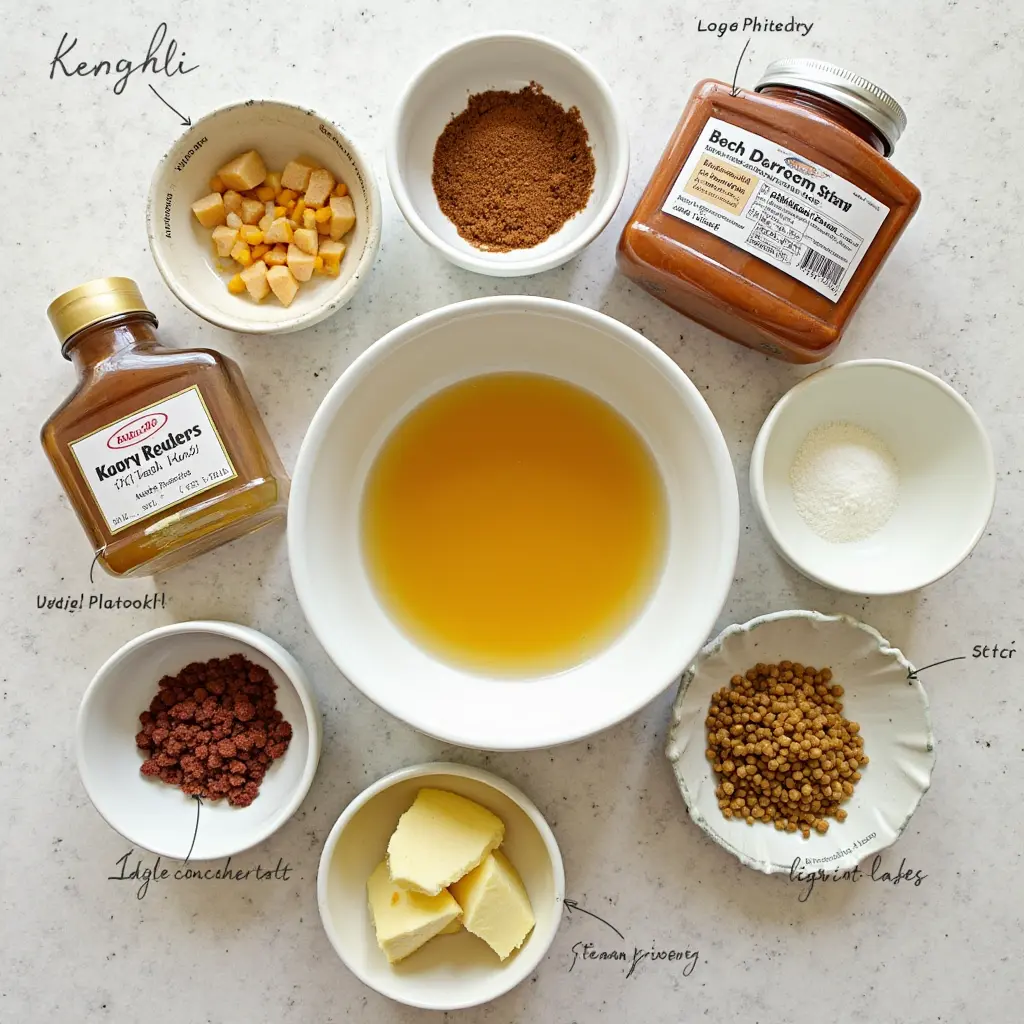Discover how to make delicious banana bread with simple techniques and tips for the best results.
There’s something incredibly comforting about the sweet aroma of banana bread baking in the oven. This beloved treat has stood the test of time, becoming a staple in kitchens worldwide. Whether you’re a seasoned baker or just starting your culinary journey, banana bread offers a perfect blend of simplicity and satisfaction that few other baked goods can match.
Why Banana Bread Has Become a Kitchen Classic
Banana bread holds a special place in our hearts and kitchens for good reason. This humble loaf emerged as a practical solution during the Great Depression when homemakers sought ways to use overripe bananas rather than waste them. Today, it continues to be loved for its simplicity, versatility, and ability to transform what might otherwise be thrown away into something truly wonderful.
The beauty of banana bread lies in its accessibility. With basic ingredients that most people already have in their pantry, it’s an approachable recipe for bakers of all skill levels. Furthermore, it’s remarkably forgiving – even if you make small mistakes, you’ll likely still end up with something delicious.
Another reason for its enduring popularity is its adaptability. The classic recipe serves as a blank canvas for creativity, allowing bakers to add their personal touch with additions like nuts, chocolate chips, or spices. This flexibility means banana bread can be reinvented countless times while maintaining its comforting essence.

From Overripe Fruit to Delightful Treat
Perhaps the most magical aspect of banana bread is its transformative nature. Those spotted, overripe bananas that might seem past their prime are actually at their peak sweetness and flavor for baking. The natural sugars intensify as bananas ripen, creating the foundation for that distinctive taste we all love.
This transformation reflects a beautiful philosophy about finding value in what others might discard – a recipe that literally turns food waste into one of the most beloved treats in our culinary repertoire.
Essential Ingredients for Perfect Banana Bread
The heart of any great banana bread recipe lies in quality ingredients. While the list is simple, each component plays a crucial role in creating that perfect loaf.
The Star of the Show: Ripe Bananas
The most important ingredient is, of course, the bananas themselves. For truly outstanding banana bread, look for bananas with plenty of brown spots or even mostly black peels. These overripe fruits offer maximum sweetness and are easy to mash, creating that moist texture and intense banana flavor that defines great banana bread.
Many bakers swear by freezing overripe bananas when they’re not ready to bake. This not only prevents waste but can actually enhance the banana flavor when thawed. The freezing process breaks down cell walls, making the bananas even softer and easier to incorporate into your batter.
Building the Foundation: Flour, Sugar, and Fat
The structure of your banana bread comes from the flour you choose. All-purpose flour works perfectly for a standard loaf, but many bakers experiment with whole wheat flour or even gluten-free alternatives for different textures and flavors.
Sugar adds sweetness but also contributes to the tender crumb and golden-brown crust. While granulated white sugar is traditional, brown sugar adds a deeper, caramel-like flavor that pairs beautifully with bananas.
The fat component – typically butter or oil – provides moisture and richness. Butter offers incomparable flavor, while oil (especially a neutral one like canola) creates an exceptionally moist loaf that stays fresh longer.
Bringing It All Together: Eggs, Leavening, and Flavorings
Eggs bind the ingredients while adding structure and richness. The leavening agents – usually baking soda, baking powder, or both – help your bread rise properly.
Finally, flavorings like vanilla extract, cinnamon, or nutmeg enhance the banana flavor without overpowering it. A pinch of salt is essential too, as it balances the sweetness and brings out all the other flavors.
The Science Behind Moist Banana Bread
Creating that perfect moist texture is often cited as the biggest challenge in baking banana bread. Understanding the science behind it can help you achieve consistent results.
Balancing Moisture and Structure
The key to perfectly moist banana bread lies in the balance between wet and dry ingredients. Too much moisture results in a gummy, undercooked center, while too little creates a dry, crumbly loaf.
Bananas themselves contribute significant moisture, which is why their ripeness matters so much. The riper they are, the more liquid they’ll add to your batter. This natural moisture, combined with the fat component (butter or oil), creates that tender crumb we all crave.

Mixing Methods Matter
How you combine your ingredients dramatically affects the final texture. Overmixing develops gluten in the flour, creating a tougher, drier bread. For the moistest result, use the “muffin method” – combine all dry ingredients in one bowl, wet ingredients in another, then gently fold them together just until incorporated.
Many bakers swear by hand-mixing rather than using electric mixers to prevent overmixing. This gentle approach preserves air pockets in the batter that contribute to a lighter texture.

Step-by-Step Guide to Baking Banana Bread
Now that we understand the ingredients and science, let’s break down the process into manageable steps.
Preparation and Mixing
- Start by preheating your oven to 350°F (175°C) and preparing your loaf pan with butter or parchment paper.
- In a large bowl, mash your overripe bananas until smooth (or with small chunks if you prefer texture).
- Mix in melted butter or oil, then add eggs, vanilla, and other wet ingredients.
- In a separate bowl, combine flour, sugar, leavening agents, salt, and any dry spices.
- Gently fold the dry ingredients into the wet mixture until just combined – a few lumps are perfectly fine!
- If adding nuts, chocolate chips, or other mix-ins, fold them in gently at the end.
Baking to Perfection
Pour the batter into your prepared pan and bake for about 55-65 minutes. The exact time will depend on your oven and the moisture content of your bananas.
The trickiest part of baking banana bread is knowing when it’s done. A toothpick inserted into the center should come out with a few moist crumbs, but not wet batter. The top should be golden brown, and the bread may have begun to pull away from the sides of the pan slightly.
Cooling and Serving
Perhaps the most challenging step is waiting for your banana bread to cool! Let it rest in the pan for about 10 minutes, then transfer to a wire rack to cool completely. This cooling period allows the structure to set and the flavors to develop.
While it’s tempting to slice into warm banana bread (and it is delicious this way), allowing it to cool completely makes for cleaner slices and actually enhances the flavor.
Creative Variations on Classic Banana Bread
One of the joys of banana bread is how easily it can be customized to suit different tastes and dietary needs.
Flavorful Add-ins
- Nuts add crunch and complement the banana flavor beautifully. Walnuts are traditional, but pecans, almonds, or hazelnuts are equally delicious.
- Chocolate chips or chunks create pockets of melty goodness that contrast with the banana flavor.
- Spices like cinnamon, nutmeg, cardamom, or even a touch of ginger can add warmth and complexity.
- Dried fruits such as cranberries, raisins, or chopped dates add chewy texture and natural sweetness.
Dietary Adaptations
Banana bread can easily be adapted for various dietary needs:
- For vegan banana bread, replace eggs with flax eggs (1 tablespoon ground flaxseed mixed with 3 tablespoons water equals one egg) and use plant-based butter or oil.
- Gluten-free versions work well with 1:1 gluten-free flour blends or almond flour (though the texture will be different).
- Reduce sugar by relying more on the natural sweetness of very ripe bananas, or substitute with honey, maple syrup, or coconut sugar for different flavor profiles.
Troubleshooting Common Banana Bread Problems
Even experienced bakers sometimes encounter issues with banana bread. Here’s how to solve the most common problems.
Sunken Middle
A sunken middle often indicates too much leavening or moisture. Try reducing the baking soda or powder slightly, or add a bit more flour if your bananas are extremely moist.
Dry or Dense Texture
If your bread turns out too dry, you might have used bananas that weren’t ripe enough, overmixed the batter, or baked it too long. For dense bread, check if your leavening agents are fresh and active.
Undercooked Center
This common issue happens when the outside bakes faster than the inside. If the top is browning too quickly but the center isn’t done, tent some foil over the top to slow the browning while allowing the center to continue cooking.
Storing and Preserving Your Banana Bread
Properly stored, banana bread actually improves in flavor after a day as the banana flavor deepens.
Short-term Storage
For enjoying within 2-4 days, store your completely cooled banana bread in an airtight container at room temperature. Adding a piece of paper towel to absorb excess moisture can help maintain the perfect texture.
Freezing for Later
Banana bread freezes beautifully for up to three months. Wrap it tightly in plastic wrap, then in foil or place in a freezer bag. You can freeze the entire loaf or individual slices for easy thawing.
To enjoy frozen banana bread, thaw at room temperature for a few hours or overnight in the refrigerator. For an extra treat, lightly toast slices before serving.
Beyond the Basic Loaf: Banana Bread Reimagined
The classic banana bread recipe can be transformed into various forms for different occasions.
Banana Bread Muffins
For grab-and-go convenience, bake your batter in a muffin tin for about 20-25 minutes. These individual portions are perfect for lunchboxes or breakfast on the run.
Banana Bread French Toast
Day-old banana bread makes extraordinary French toast. Slice it slightly thicker than usual, dip in an egg and milk mixture, and cook on a buttered griddle until golden. Top with maple syrup and fresh bananas for an indulgent breakfast.
Mini Loaves for Gifting
Bake your batter in mini loaf pans for about 25-30 minutes to create perfect homemade gifts. Wrap in parchment paper, tie with twine, and attach a handwritten note for a thoughtful present that’s sure to be appreciated.
The Emotional Connection to Banana Bread
Beyond its delicious taste, banana bread often holds emotional significance for many people. It’s a recipe passed down through generations, a comfort food that reminds us of home, or the first thing many learn to bake.
During the 2020 pandemic lockdowns, banana bread experienced a remarkable resurgence as people returned to baking for comfort and to pass the time. Social media feeds filled with proud photos of freshly baked loaves, creating a shared experience that connected people despite physical isolation.
This emotional component may help explain why, despite countless fancy baking trends that come and go, the humble banana bread endures as a beloved favorite. It represents something more than just food—it embodies comfort, resourcefulness, and the simple pleasures of home baking.

Frequently Asked Questions
What is the secret to moist banana bread?
The secret to moist banana bread lies in using very ripe bananas with brown or black peels, as they contain more natural sugars and moisture. Additionally, avoid overmixing the batter once you add the flour, as this develops gluten and can create a drier texture. Using oil instead of butter can also result in a moister loaf that stays fresh longer. Finally, be careful not to overbake—remove the bread from the oven when a toothpick inserted in the center comes out with a few moist crumbs rather than waiting until it’s completely clean.
Is banana bread healthy or unhealthy?
Banana bread falls somewhere in the middle of the health spectrum. On the positive side, it contains bananas, which offer potassium, fiber, and various vitamins. However, traditional recipes also include significant amounts of sugar and fat, making it more of a treat than a health food. You can make healthier versions by reducing sugar, using whole wheat flour, adding nuts for good fats and protein, and incorporating less processed ingredients. Even with these modifications, it’s best enjoyed in moderation as part of a balanced diet.
What is the number one mistake made when making banana bread?
The number one mistake in making banana bread is using bananas that aren’t ripe enough. Bananas should be very ripe with brown or black spots covering the peel for the best flavor and texture. Underripe bananas don’t provide enough sweetness or moisture, resulting in bland, dry bread. They’re also harder to mash properly, which can affect the overall consistency of your loaf. Always wait until your bananas are properly ripened or speed up the process by placing them in a paper bag with an apple, which releases ethylene gas that accelerates ripening.
What ingredients are in a banana bread?
A classic banana bread recipe includes ripe mashed bananas, all-purpose flour, butter or oil, eggs, sugar (white or brown), baking soda and/or baking powder, salt, and vanilla extract. Many recipes also incorporate mix-ins such as chopped nuts (commonly walnuts), chocolate chips, or spices like cinnamon and nutmeg. These basic ingredients can be modified to accommodate dietary restrictions, such as using plant-based substitutes for eggs and butter in vegan versions, or alternative flours for gluten-free options. The proportions and exact ingredients vary between recipes, but these components form the foundation of most traditional banana bread.
